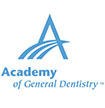TMJ Treatment Bothell
Lasting Relief from Jaw Pain

Do you frequently experience jaw pain, difficulty chewing, or headaches? If so, there is a good chance that you have TMJ disorder (TMD). This common affliction can worsen over time if it is left untreated, and it can cause a wide range of aches and pains. The good news is that our Bothell team may be able to help you find lasting relief via customized, non-invasive treatments. Continue reading below to learn more, or get in touch with us to request a consultation.
Why Choose Annigan Dental for TMJ Treatment?
- Highly Skilled & Dedicated Dentists
- Non-Invasive Treatment Options
- Effective, Long-Term Pain Relief
What Is TMJ Disorder?
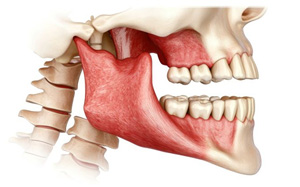
Do you know about your temporomandibular joints? They are commonly referred to as TMJs, and although they may be tiny, they serve a crucial purpose — connecting your lower jaw to your skull. Because their function is so important, even slight misalignment, injury, or inflammation can lead to painful and debilitating symptoms. This issue is called TMJ disorder, and if left untreated, it can often contribute to chronic problems.
TMD can have various causes, including teeth grinding, stress, facial injuries, and more.
Symptoms of TMJ Disorder

TMD can cause dozens of different symptoms, but here are some of the most common:
- Jaw pain.
- Frequent, painful headaches.
- Migraines.
- Ongoing pain in the face, head, neck, shoulders, or back.
- Sore facial muscles.
- Difficulty opening and closing your mouth.
- The sensation of lockjaw
- Popping or clicking in your jaw joints.
- Ringing in your ears or other hearing symptoms. (Pain in your ears may also occur.)
- Changes in the way your upper and lower teeth fit together.
Treatments for TMJ Disorder
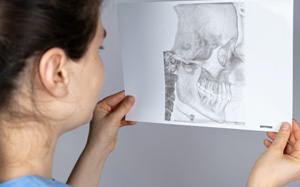
In order to determine the best way to address your TMD, our team will perform a thorough examination. We may also take some X-rays or other types of images. Once we understand your situation, we can recommend your next steps. Most patients respond well to the non-invasive therapies that we offer, which include custom occlusal splints and BOTOX injections. Here is a brief overview of how each option works:
Occlusal Splint
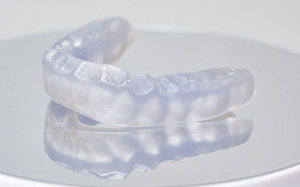
In many cases, TMJ disorder can be alleviated with the help of a custom-made bite guard, also called an occlusal splint. This simple device prevents your upper and lower teeth from touching one another, so it reduces pressure on your muscles and joints by minimizing the instances of clenching and grinding that typically exacerbate TMD.
BOTOX for TMJ Treatment
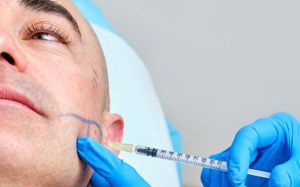
You may have heard of BOTOX as a cosmetic treatment before, but what you may not know is that this treatment can also be used to address a variety of medical issues, including temporomandibular joint (TMJ) disorder. For some patients, this can be a fast and easy method of addressing some of the symptoms of TMJ disorder. Here’s what you should know about BOTOX for TMJ disorder.
What is BOTOX?

Botox is an injectable product made from a diluted form of the bacteria botulinum toxin. It can be injected directly into overworked muscles around your jaw joints to help them relax and release tension that could be causing you pain. It has also been used to help treat chronic migraines, jaw tension, and muscle spasms.
Optimal results with BOTOX can typically take between five and ten days and could last for between three and four months. Injections take just moments to perform, and in many cases can be completed in a single 20-minute appointment.
Prior to treatment, Dr. Hsue or Dr. Fredrickson will speak with you about your symptoms and conduct an examination to determine how many BOTOX injections will be necessary to ensure you get the most benefit from treatment. Once your injections are complete, you can go about your day as you normally would.
Are You a Good Candidate for BOTOX for TMJ Treatment?

There are many symptoms of TMJ disorder that you may experience, including the following:
BOTOX can be especially helpful for patients who are experiencing bruxism (teeth grinding), jaw tension, muscle spasms, and facial pain because of overworked muscles. However, while it can provide temporary pain relief for some, it may not be the ideal solution for all patients, as it only addresses the pain and not the underlying cause of their symptoms.
How Can BOTOX Treat TMJ Disorder?
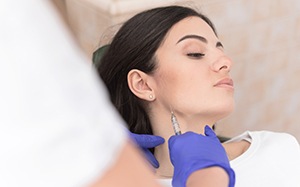
BOTOX injections can treat TMJ disorder pain by helping the muscles surrounding your jaw joints and jaw relax. In fact, a 2012 study found that this treatment improved 90 percent of participants TMJ disorder symptoms. In addition to helping relax the muscles surrounding the jaw, BOTOX can also help patients with TMJ have fewer and less severe headaches, sleep better, and guard against the painful effects of bruxism by reducing its frequency and intensity.


